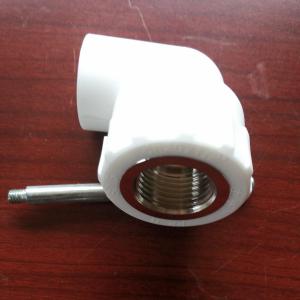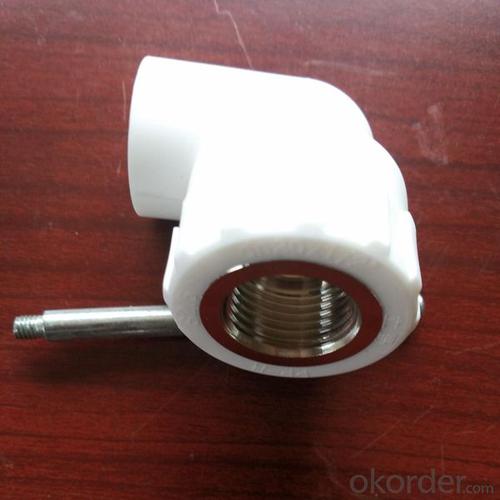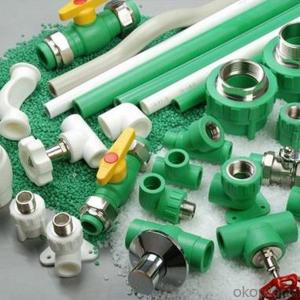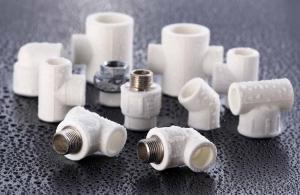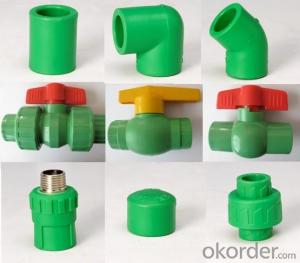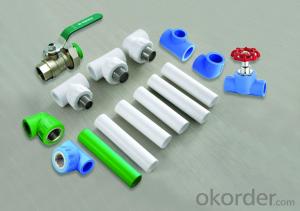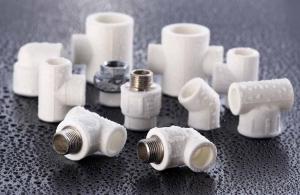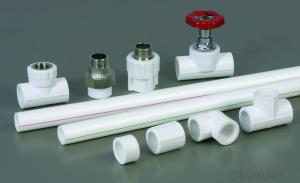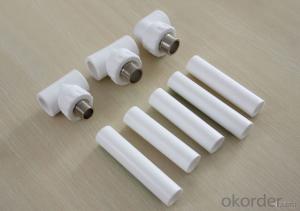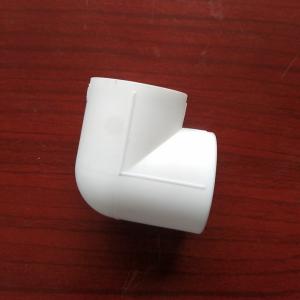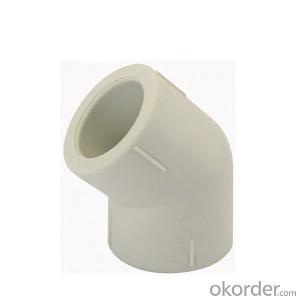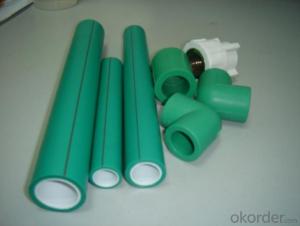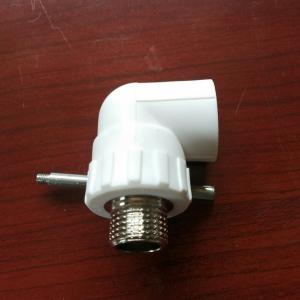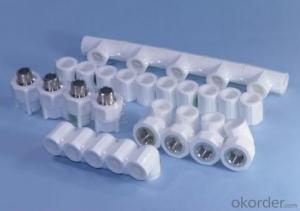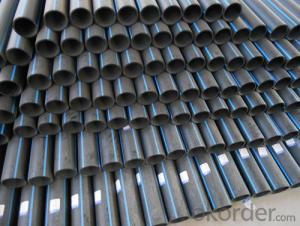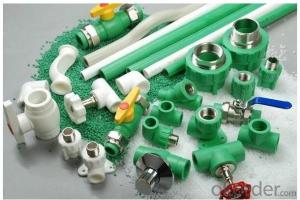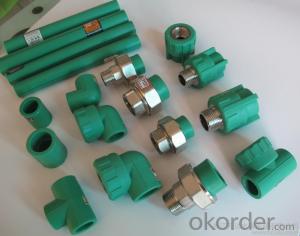Rv Plastic Water Pipe Fittings PPR Female Elbow for Civil Construction and Agricultural PE Pipes
- Loading Port:
- Ningbo
- Payment Terms:
- TT or LC
- Min Order Qty:
- 3000 pc
- Supply Capability:
- 100000 pc/month
OKorder Service Pledge
OKorder Financial Service
You Might Also Like
PPR Female Elbow Plastic Pipe Fittings
Mainly used to connect civil construction, industrial, agricultural and landscape irrigation drainage system PE pipes
Main Features of PPR Female Elbow Plastic Pipe Fittings
1, health, non-toxic: the various parts of the pipeline system consists of PP-R pipes and fittings constituted can be completely non-toxic, health indicators in line with GB / T17219 standards.
2, does not rust: PH value can withstand a wide temperature range, in the range of 1 to 14, a high concentration of acid and alkali corrosion.
3, wear-resistant, non-fouling: PP-R pipe and tube inner wall smooth, uniform flow resistance is small and does not scale.
4, reducing vibration and noise: PP-R pipe has excellent insulation properties, can significantly reduce the vibration and noise caused by the flow of liquid.
5, anti-cracking: PP-R materials excellent elasticity makes pipes and fittings sectionally With frost expansion of the liquid together without bursting.
6, anti-condensation, heat loss is small: PP-R material is a poor thermal conductor, reduces condensation and reduce heat loss less.
7, anti-electric corrosion: PP-R material is a poor conductor of electricity can avoid corrosion. Complete specifications: 10-30 optional
Pictures of PPR Female Elbow Plastic Pipe Fittings
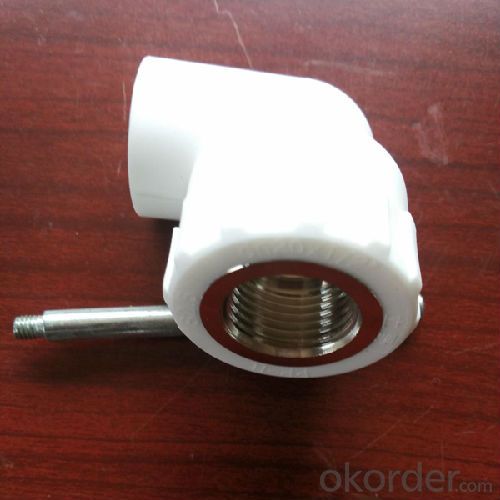
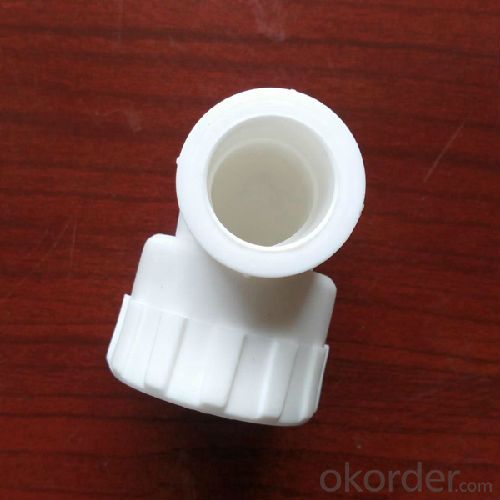
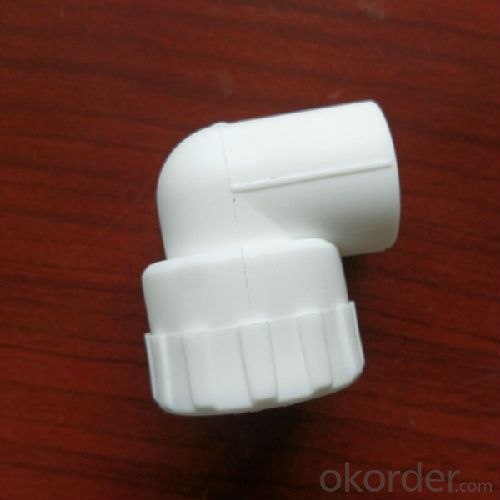
- Q: Are plastic pipe fittings suitable for compressed gas applications?
- No, plastic pipe fittings are not suitable for compressed gas applications as they can become brittle and fail under high pressure, posing safety risks. Metal pipe fittings are better suited for these applications.
- Q: Are plastic pipe fittings suitable for underground installations?
- Yes, plastic pipe fittings are suitable for underground installations. They are commonly used due to their durability, resistance to corrosion, and ability to withstand underground pressure and environmental conditions. Additionally, plastic pipe fittings are lightweight, making them easier to handle and install in underground applications.
- Q: Are plastic pipe fittings resistant to electrical conductivity?
- Yes, plastic pipe fittings are generally resistant to electrical conductivity.
- Q: What is the PVC pipe fitting?
- PVC pipe (PVC-U pipe) rigid PVC pipe is made of PVC resin and stabilizer, lubricant and so on. It is extruded and formed by hot pressing method. It is the earliest plastic pipe to be developed and applied. PVC-U pipes are corrosion resistant, easy to adhere, low in price and hard in texture, but because of the exudation of PVC-U monomers and additives, they are only suitable for the feed water system with a temperature of not more than 45 DEG C. Plastic pipes are used to transport potable water, waste water, chemicals, heating and cooling fluids, foodstuffs, ultrapure liquids, slurries, gases, compressed air, and vacuum systems.
- Q: Can plastic pipe fittings be used for fire hydrant systems?
- No, plastic pipe fittings cannot be used for fire hydrant systems. Fire hydrant systems require strong and durable materials, such as cast iron or ductile iron, to withstand high water pressure and potential fire hazards. Plastic pipe fittings are not suitable for these demanding conditions and could compromise the effectiveness and safety of the system.
- Q: What are the commonly used pipe fittings?
- Divided by usage1, for pipe connected fittings: flange, loose joints, hoop, hoop card sleeve, drawing three2, change the direction of pipe fittings: elbow, bend3, change the pipe diameter pipe fittings: reducing diameter (different diameter pipe), different diameter elbow, branch pipe, reinforcement pipe4, increase the pipe branch of the pipe: three pass, four pass5, for pipe line seal: gasket, raw material belt, hemp, pipe plug, blind flange, blind plate, welding head, plug6, the pipeline fittings for fixed clasp, hook, rings, bracket, bracket, pipe etc.
- Q: Are plastic pipe fittings resistant to hydraulic oils?
- No, plastic pipe fittings are generally not resistant to hydraulic oils.
- Q: Are plastic pipe fittings resistant to extreme weather conditions?
- Yes, plastic pipe fittings are generally resistant to extreme weather conditions. They are designed to withstand a wide range of temperatures and weather conditions, including hot summers and cold winters. Plastic fittings are often made from durable materials that are resistant to UV radiation, moisture, and other environmental factors, ensuring their performance and longevity in various weather conditions.
- Q: Can plastic pipe fittings be used for chemical mixing systems?
- Plastic pipe fittings can be used for chemical mixing systems, but it is important to select fittings made from chemically resistant materials that can withstand the specific chemicals being used.
- Q: How do plastic pipe fittings compare to polybutylene fittings?
- Plastic pipe fittings and polybutylene fittings have some similarities, but there are important differences to consider. Plastic pipe fittings are typically made of PVC or CPVC materials, which offer good durability and resistance to chemicals. They are widely used in various applications, including plumbing, irrigation, and industrial systems. On the other hand, polybutylene fittings are specifically designed for use with polybutylene pipes, a type of plastic pipe that was commonly used in the 1970s-1990s but faced issues with leaks and failures due to the degradation of the material over time. As a result, polybutylene fittings are less commonly used today and are generally not recommended for new installations. In summary, plastic pipe fittings are a more reliable and widely used option compared to polybutylene fittings.
Send your message to us
Rv Plastic Water Pipe Fittings PPR Female Elbow for Civil Construction and Agricultural PE Pipes
- Loading Port:
- Ningbo
- Payment Terms:
- TT or LC
- Min Order Qty:
- 3000 pc
- Supply Capability:
- 100000 pc/month
OKorder Service Pledge
OKorder Financial Service
Similar products
Hot products
Hot Searches
Related keywords
